Going Small: The Tiny House Movement

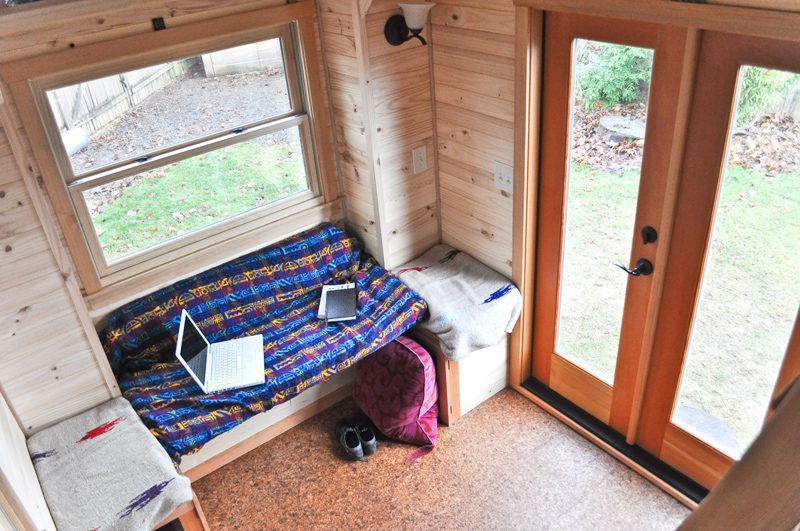
The view from the loft inside Tammy and Logan's Tiny House. photo via PADtinyhouses.com
The BIG Tiny House
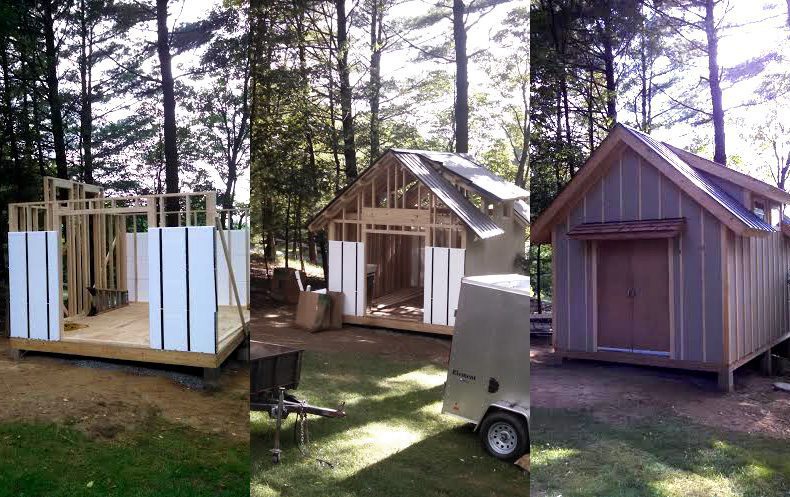
A Shed/Cabin Project in North Carolina Using InSoFast UX Panels for Insulation.
| Install Guide | Ordering Guide | Contact/Quote |
Owning a house has grown into an integral aspect of the ‘American Dream’. This concept shared by generations of Americans was coined by James Truslow Adams in 1931 and pertains to the belief that anyone regardless of their circumstances at birth can pursue a better life by working hard. Becoming a homeowner symbolizes for many the achievement of the American Dream in terms of it’s implications of security and success. But like our cars and dinners, our homes keep on growing.
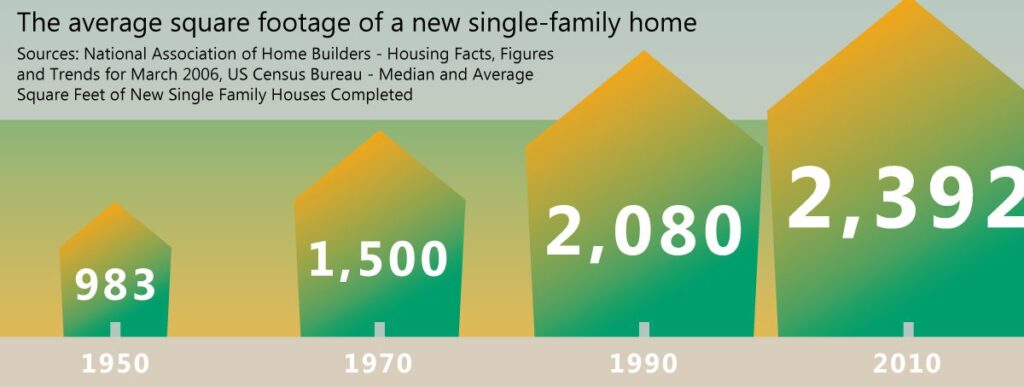
The average American home in 1950 was around 983 square feet, which grew to 2,480 square feet by 2011. Amidst an overwhelming ethos where size equals value, a tiny little movement has been quickly gaining momentum. The American Dream is being re-evaluated by homeowners who consciously choose to live small, often within 500 square feet of space or less. Much like Shipping Container Architecture (read our blog article on Container Architecture here), The Tiny House Movement has blossomed into a versatile, sustainable and budget friendly housing solution in a time where these things matter.
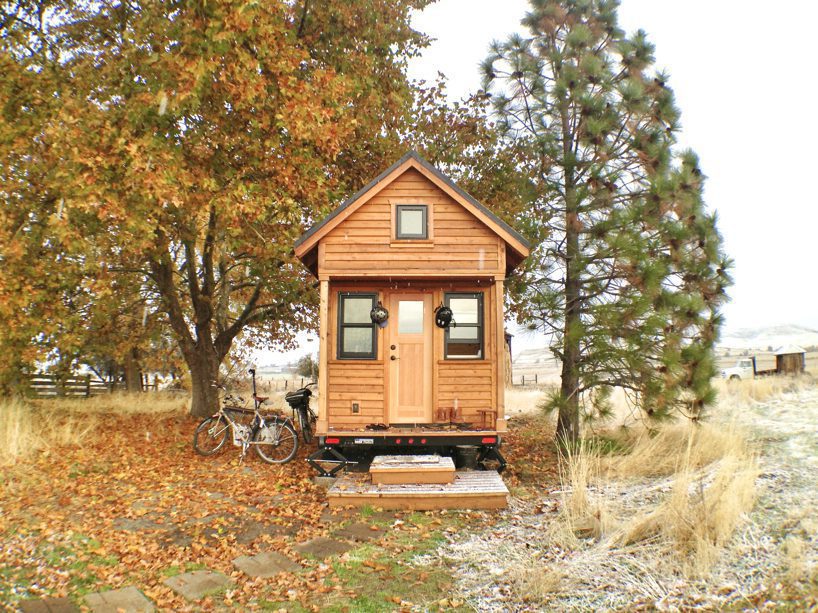
Tammy and Logan’s Tiny House designed by PAD Tiny Houses
Many Tiny-Housers
So why are Americans shrinking the size of their American Dreams? Many Tiny-Housers embrace downsizing as a way to own a home without the financial ties of a mortgage and property tax. They are more focused on enjoying life, time with family and pursuing a satisfying career than working the majority of their time to own a home they rarely use.
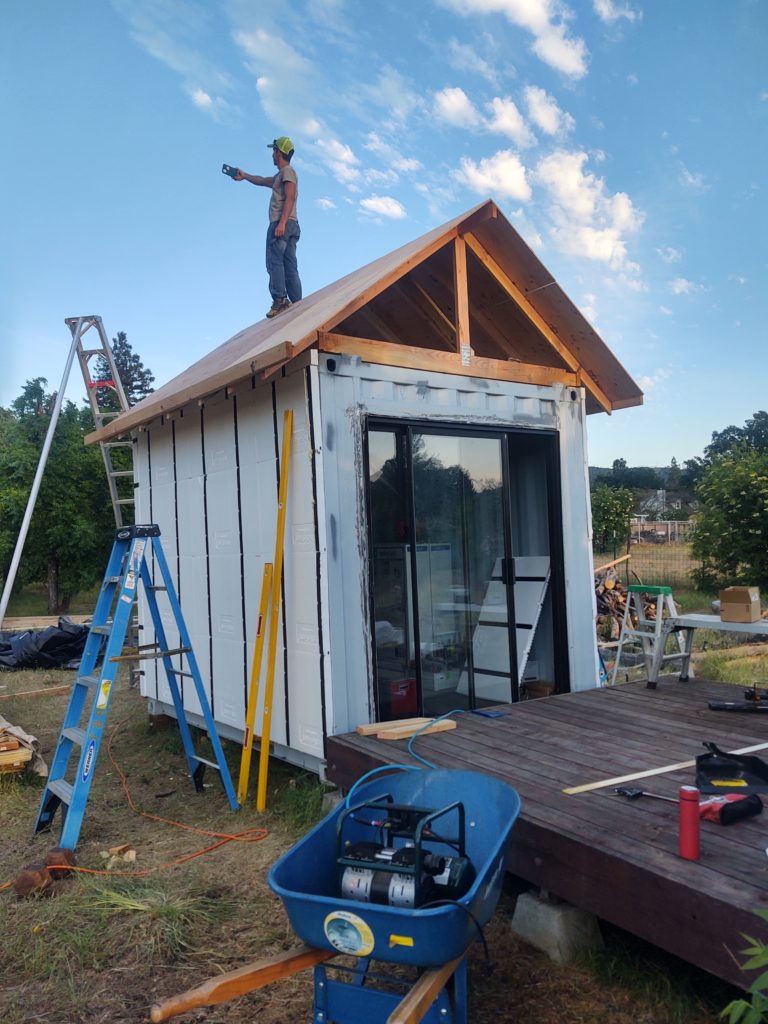
An InSoFast customer who is building her own tiny home in Texas from a shipping container says she’s more interested in a minimalist lifestyle that allows her to truly experience life as opposed to working hard sustaining existence. She also finds that it fulfills both her creative needs and her desire to live sustainably.
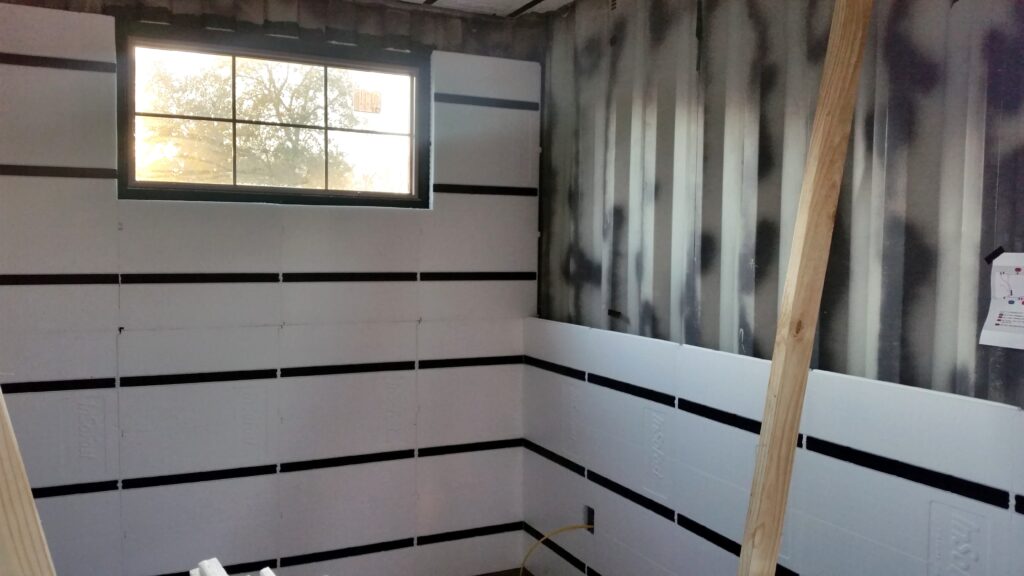
Tiny house owners Tammy and Logan of Portland, Oregon were $30,000 in debt before downsizing from a 2 bedroom apartment to their 128 square foot tiny house. “Jobs move, people lose jobs, people die,” Tammy describes, “So how can you structure your life so that you’re more flexible and embrace the good stuff even when loss makes it really really difficult?” Their small home was designed by Tiny House revolutionary Dee Williams (owner of PAD Tiny Houses). It’s minimal, cost $33,000 to build and it’s on wheels.
By putting the home on wheels Logan says, “We are legal when it comes to a lot of the building codes, because by being on wheels we are actually under the Department of Transportation and not a part of the City Building Codes”. They also do not have to pay property tax. Tammy and Logan have since moved their home to California and continue to provide advice to Tiny Home builders through their blog and a recent book release.

The view from the loft inside Tammy and Logan’s Tiny House. photo via PADtinyhouses.com
Tiny House Movement
Dee Williams who designed Logan and Tammy’s home is a renowned pioneer of the Tiny House Movement. In 2004 Williams left her 4-bedroom home behind and built her own 84 square foot little home. Dee says, “The facts are the facts. I’ve found a certain bigness in my little house- a sense of largeness, freedom, and happiness that comes when you see there’s no place that you’d rather be”. Since changing her lifestyle she founded PAD (Portland Alternative Dwellings), where she provides consultation and workshops for future Tiny House builders. This year Williams released a memoir “The Big Tiny” that chronicles her journey into the big world of Tiny House living.
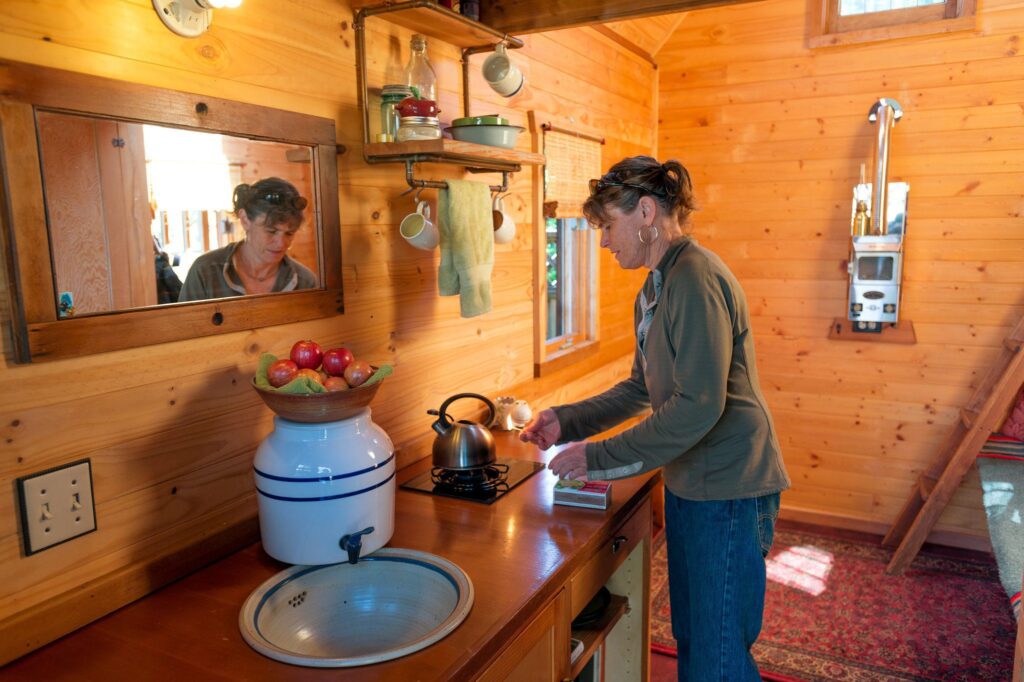
Dee Williams inside her 84 sq ft Tiny House. Photography via TInyHouseLiving.com
Like Dee who built her Tiny House for $10,000, a large number of new tiny homeowners choose to build themselves. Recently a family of four in Florida built a 320 square foot home out of mostly salvaged materials for only $12,000. It’s actually not even unusual for DIY Tiny Home builders to complete a project with as little as a few thousand dollars. La Mar Alexander built a 400 square foot solar powered cabin for only $2,000.
We’ve had several DIYers use InSoFast panels for insulating small structures. Earlier this year our UX panels were used to insulate a shipping container Tiny Project in Brooklyn, NY. And in North Carolina a customer built a small cabin structure with UX 2.0 panels as exterior insulation (pictured below). The DIY nature, quick installation and high performance of InSoFast makes it a great insulation option for Tiny Houses.

A Shed/Cabin Project in North Carolina Using InSoFast UX Panels for Insulation.
Hurricane Katrina
Tiny homes can also be an affordable solution for low income housing and crisis situations. Back in 2005 in the wake of the Hurricane Katrina disaster thousands were left homeless. FEMA initially came up with the solution to provide emergency trailers. Over 23,000 trailers were installed in New Orleans alone from 2005 onward after Katrina wreaked havoc, but the inadequacies of these structures as livable homes quickly came to the surface. Not only did these manufactured homes feel temporary, but later on a multimillion dollar lawsuit was filed. High levels of formaldehyde were found in the FEMA trailers, causing major health issues for the trailer inhabitants.
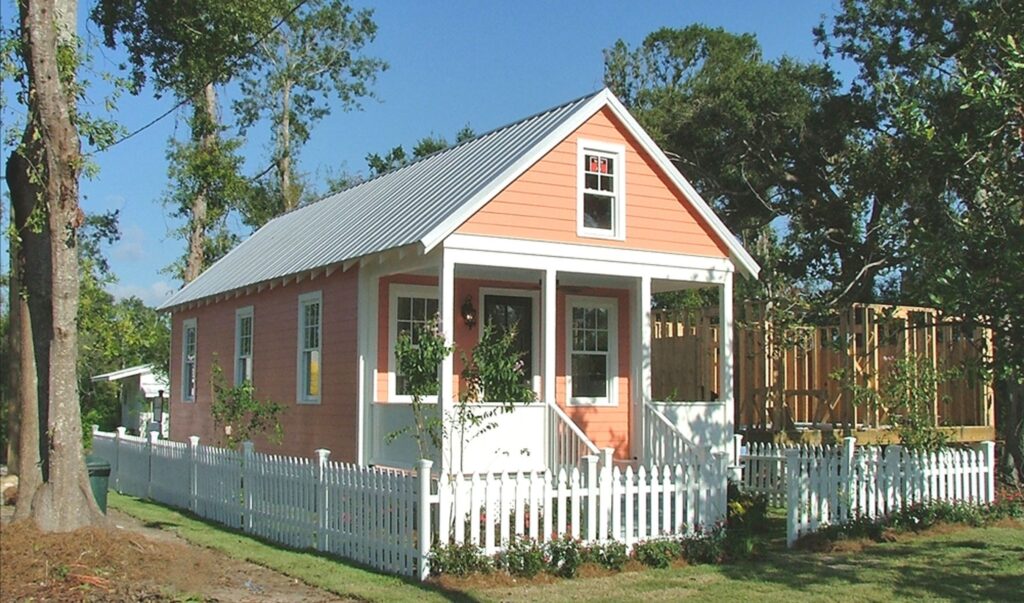
Amidst FEMA’s decision to use the trailers during the crisis, the architect Marianne Cusato became inspired to design a solution of her own. Since the FEMA trailers were made from cheap materials like aluminum and particle board, they were structurally cheap, flimsy, and uninsulated. Cusato’s plans were designed to be permanent and safe, equivalent to an actual home. Although some of the homes went up to 1,800 square feet, most were designed with ‘tiny’ in mind.
Starting at around 300 square feet these small options were quick to build, spatially smart, and buyable in ‘kit form’. “What the Katrina Cottage is, is an alternative to the FEMA trailer. No joke. And get this: It costs less…Cusato thinks her cottage could be manufactured for about 45 grand. Or less. [where FEMA trailers cost tax payers around $75,000 each] Plus, you can add on to it. So it’s a temporary solution with a lease for permanence.”
Eventually Lowe’s partnered up with Cusato and released several Katrina Cottage kits for sale throughout the country. $74.5 million was awarded by Congress to build Katrina Cottages at four sites in Louisiana, proving Tiny Homes to be a fitting solution.
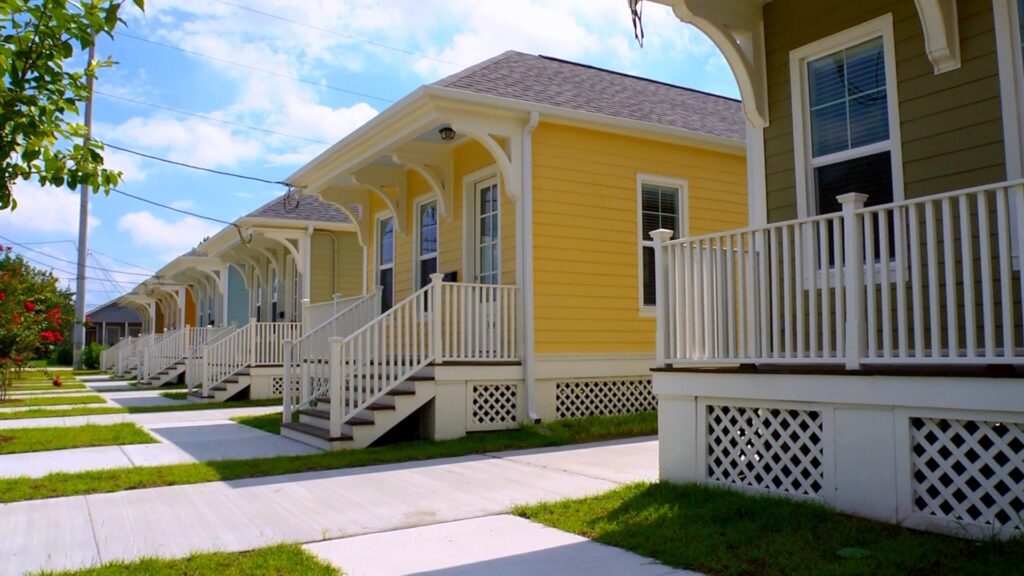
A neighborhood of Katrina Cottages in New Orleans, LA.
So is the age of the McMansion over? It’s hard to say. But for many people the American Dream seems to be changing. The Tiny House Movement is dipping into America’s mainstream with new TV shows like Tiny House Nation. And in certain cities like Portland, Oregon, it’s estimated that 1 in 10 homes are considered ‘Tiny’. With their versatility, cost-effectiveness, small carbon footprint, and DIY nature, Tiny Homes could very well be the norm of the future.
Check out our Micro-Architecture Board on Pinterest for more Tiny House inspiration.
